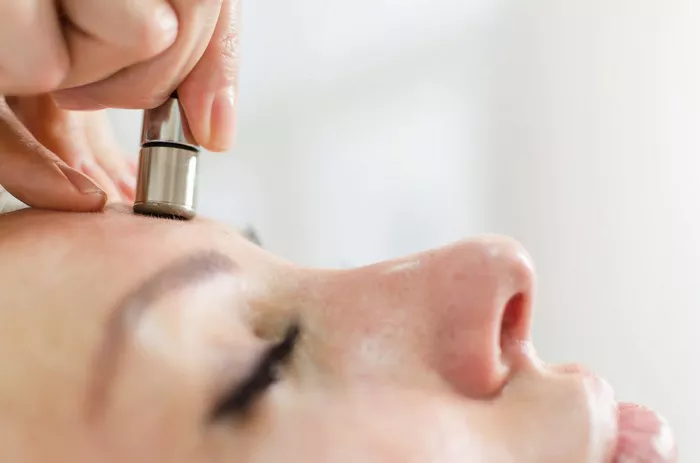Microdermabrasion is a popular skincare treatment that can improve the texture, tone, and overall appearance of the skin. Traditionally performed in a professional setting, microdermabrasion is now available in at-home kits, allowing individuals to enjoy the benefits of the treatment in the comfort of their own homes. However, it is important to understand how often microdermabrasion can be performed at home to ensure safe and effective results. In this article, we will explore the frequency at which you can safely do microdermabrasion at home.
Understanding Microdermabrasion
Microdermabrasion is a non-invasive exfoliation technique that uses fine crystals or a diamond-tipped wand to gently remove the outer layer of dead skin cells from the skin’s surface. This process helps to stimulate collagen production, improve skin texture, reduce fine lines, acne scars, and hyperpigmentation. The result is smoother, brighter, and more youthful-looking skin.
In a professional setting, microdermabrasion is typically performed in a series of treatments spaced a few weeks apart to allow the skin to heal between sessions. However, when using at-home microdermabrasion kits, it is crucial to consider several factors before determining the appropriate frequency.
Skin Type and Sensitivity
One of the most important factors to consider when determining how often you can do microdermabrasion at home is your skin type and sensitivity. Each individual’s skin is unique, and some may have more sensitive or reactive skin than others.
If you have sensitive or easily irritated skin, it is advisable to start with a lower frequency and observe how your skin responds before increasing the frequency. Doing microdermabrasion too frequently or aggressively can potentially lead to skin irritation, redness, or even damage.
Intensity of the Treatment
Another crucial factor to consider is the intensity of the microdermabrasion treatment. At-home kits generally provide adjustable settings to control the level of exfoliation. It is important to start with the lowest intensity and gradually increase it as your skin becomes accustomed to the treatment.
If you are using a more intense setting, it may be necessary to space out your treatments to give your skin enough time to recover and heal properly. Always follow the instructions provided with your at-home microdermabrasion kit and consult with a skincare professional if you have any concerns or questions about the intensity of the treatment.
Frequency Recommendations
While the frequency of at-home microdermabrasion can vary depending on individual factors, it is generally recommended to space out treatments to allow the skin to regenerate and recover adequately. Here are some general guidelines to consider:
Start with a Longer Interval
When you first start doing microdermabrasion at home, it is recommended to begin with a longer interval between treatments. Start by spacing out your sessions every two to three weeks. This allows your skin to adjust to the treatment and minimizes the risk of irritation or overexfoliation.
Observe Your Skin’s Response
After each microdermabrasion treatment, observe how your skin reacts and recovers. Pay attention to any signs of redness, irritation, or sensitivity. If your skin appears to be recovering well without any adverse effects, you can gradually decrease the interval between treatments.
Consider Your Skin’s Needs
Your skin’s needs may vary depending on factors such as environmental conditions, skincare routine, and lifestyle. Assess the condition of your skin and evaluate whether it would benefit from more frequent microdermabrasion sessions. However, always remember to listen to your skin and avoid overdoing it.
Consult with a Skincare Professional
If you are unsure about the appropriate frequency or have any concerns about at-home microdermabrasion, it is recommended to consult with a skincare professional. They can assess your skin, provide personalized advice, and guide you on how often you should perform the treatment based on your specific needs and goals.
Alternatives to At-Home Microdermabrasion
In addition to considering the frequency of at-home microdermabrasion, it is worth exploring alternative exfoliation methods and treatments. There are other options available that can provide similar benefits to microdermabrasion and may be more suitable for certain individuals or skin types. Some alternatives to consider include:
Chemical Exfoliants
Chemical exfoliants such as alpha and beta hydroxy acids (AHAs and BHAs) or enzymes can be gentler alternatives to physical exfoliation methods like microdermabrasion. These products work by dissolving the bonds between dead skin cells, promoting exfoliation and cell turnover.
Gentle Scrubs
If you prefer a physical exfoliation method but find microdermabrasion too intense for your skin, opt for gentler facial scrubs. Look for products with fine particles or natural exfoliants like jojoba beads or rice powder. Be sure to avoid scrubs with large or jagged particles that can cause micro-tears in the skin.
Professional Microdermabrasion
If you have concerns about performing microdermabrasion at home or want to achieve more significant results, it may be beneficial to seek professional microdermabrasion treatments. A skincare professional can customize the treatment to your specific needs, provide a deeper exfoliation, and offer a more thorough assessment of your skin’s condition.
Conclusion
When it comes to doing microdermabrasion at home, it is essential to approach the treatment with caution and consider individual factors such as skin type, sensitivity, and the intensity of the treatment. Starting with a longer interval between sessions and observing your skin’s response will help you determine the appropriate frequency for your at-home microdermabrasion routine. Additionally, exploring alternative exfoliation methods or seeking professional treatments may also be suitable options to achieve the desired results while ensuring the health and well-being of your skin.


